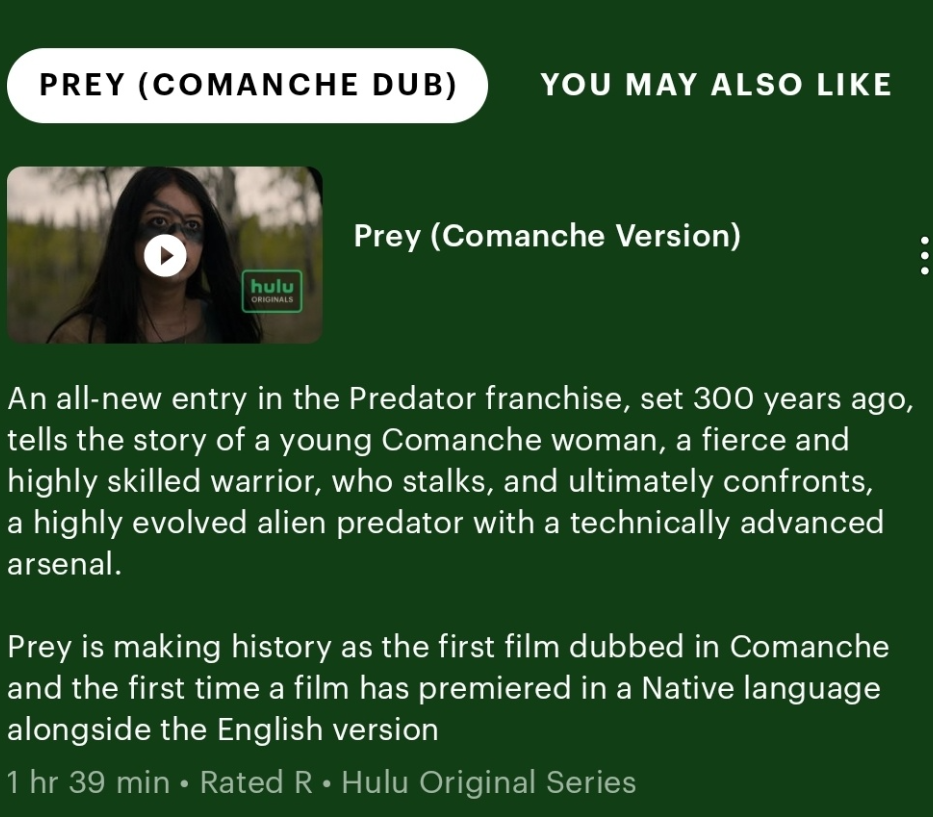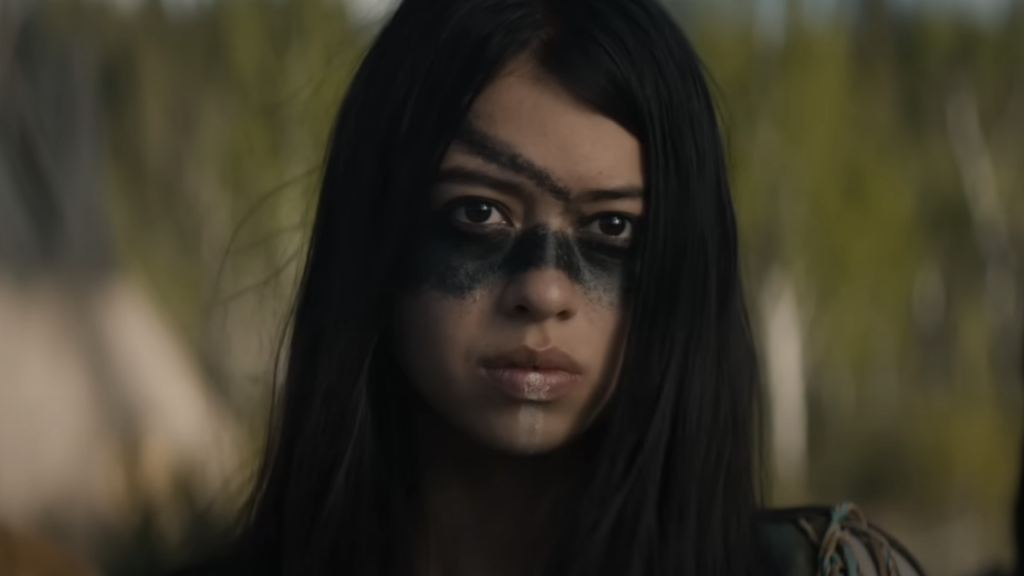Want to hear more from the actors and creators of your favorite shows and films? Subscribe to The Cinema Spot on YouTube for all of our upcoming interviews!
Something about me? I have been a nerdy cinephile for as long as I can remember. Putting the two together is living my best life. That notwithstanding, I was born to express, not to impress, so I blog because I don't have friends. In other news, I like hashtags because they look like waffles, prefer my puns intended, and I always give 100% unless I'm donating blood. Thanks for reading.
In case you missed it, Hulu has released arguably the best film ever in the Predator franchise, Prey. Fans have streamed this new release in droves. However, they may have missed a fascinating factoid about the movie.
Prey made a little history for indigenous people in the film. This will mark the first time a movie has been dubbed in Comanche. More importantly, Prey is the first film to premiere in a Native language alongside its English counterpart.

Put the soapbox away. Now is not the time for “It’s about time.” Just celebrate that it happened. This is a bold step forward for Hollywood. A bright light has shined upon Native Americans too seldom not to call it out.
Director Dan Trachtenberg (Black Mirror, The Boys, 10 Cloverfield Lane), seems to be the streamers’ top guy for exclusive movies. For Prey, he placed the prequel 300 years ago in the land of the Comanche Nation. For those scoring at home, the Comanche originally hailed from eastern Wyoming. Then, they migrated to central Nebraska and eventually settled in southwest Oklahoma, where they are today.
Some movies, most notably the Oscar-dominating Dances with Wolves, have featured Native American culture. They even used authentic indigenous tongues in certain scenes. But this is an important moment for indigenous people in movies. Prey created English and Comanche dubs to be released side-by-side.
An Answer to Prey-er

(Photo Credit: David Bukach /20th Century Studios)
(Okay, I had to try. Sorry, not sorry. Move along.)
In 2013, Star Wars: A New Hope made history — Lucasfilm dubbed it in Navajo. Granted, it took four decades, but it happened! That marked the first time a significant studio dubbed any film in a Native American language. Three years later, Finding Nemo was dubbed in Navajo. Since then, several film studios made that choice, including Clint Eastwood’s and Sergio Leone’s iconic “spaghetti westerns.”
SlashFilm sat down with Tractenberg and his producer Jhane Myers (who has Comanche lineage), about this achievement and gained quite the talking point during the interview:
That’s really important to me being Comanche and working with our Comanche language department, also with working with Comanche language speakers. But just the fact that people will have a choice, the world will have a choice to listen to the whole film in Comanche is amazing.
Jhane Myers, SlashFilm, June 7, 2022
If you’re a history enthusiast, this should be thrilling to hear how Comanche sounded three centuries prior. Myers is less a producer and more of a proud parent about what Prey offers America through this dub:
That’s never been done for my tribe, ever.
But this is the first time for a brand new film to come out and have that option to hear it all in the whole language. So that not only inspires the young language speakers of my nation, but that inspires a lot of other people and shows them, and like I said, shows the world what our language is about. Which is thrilling for me
Jhane Myers, SlashFilm, June 7, 2022
History That Should be Repeated

At present, 96 per cent of the world’s approximately 6,700 languages are spoken by only 3 per cent of the world’s population. Although indigenous peoples make up less than 6% of the global population, they speak more than 4,000 of the world’s languages.
United Nations Deaprtment of Public Information, “Indigenous Languages,” 2019
Let that set in for a minute. Those languages will go extinct because indigenous people are rarely represented in movies or television. After all, the medium is the most effective way to evangelize anything.
If that doesn’t perk your ears, this should. “Every two weeks, an Indigenous language dies.”
Who knew Prey would be a flare about Native American culture and its importance to global language and communication? No one that reviewed this film, that’s for certain. What began in 1987 with a muscle-bound actor from Austria ended up in 18th-century rural America.

For Prey’s captivating lead, Sahiya Nakoda actor Amber Midthunder, who plays Naru, this film had to be personal. That’s probably why she is so captivating in the role. Her father, David, has been an actor for 15 years. Most notably, he led the Lonesome Dove prequel, Comanche Dove.
With Prey, know this is much more than a Predator prequel. This is history. We are privileged to enjoy and absorb a glimmer of this nation’s past today, thanks to people like Myers and the Midthunders. (Well, minus the Predator, but you get the idea.)
Something about me? I have been a nerdy cinephile for as long as I can remember. Putting the two together is living my best life. That notwithstanding, I was born to express, not to impress, so I blog because I don't have friends. In other news, I like hashtags because they look like waffles, prefer my puns intended, and I always give 100% unless I'm donating blood. Thanks for reading.




14 Comments on “Hulu’s Prey Set Historic Benchmark For Native Americans And Film”